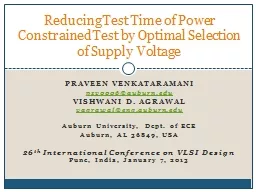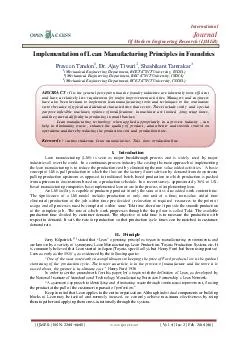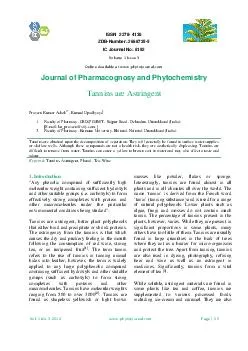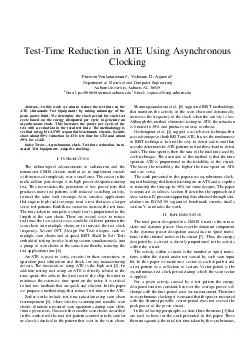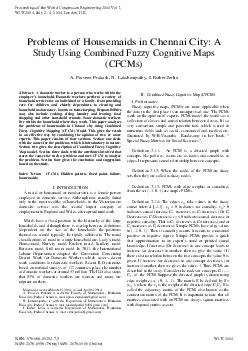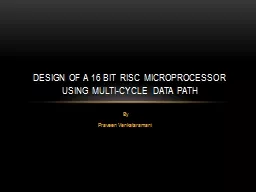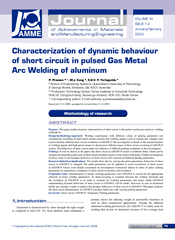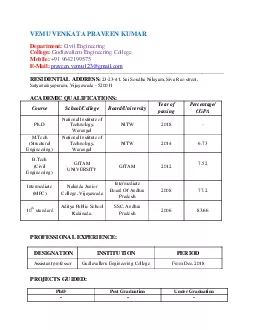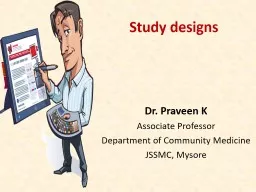PPT-Praveen Venkataramani
Author : debby-jeon | Published Date : 2016-03-08
pzv0006auburnedu Vishwani D AgrawaL vagrawalengauburnedu Auburn University Dept of ECE Auburn AL 36849 USA 26 th International Conference on VLSI Design Pune
Presentation Embed Code
Download Presentation
Download Presentation The PPT/PDF document "Praveen Venkataramani" is the property of its rightful owner. Permission is granted to download and print the materials on this website for personal, non-commercial use only, and to display it on your personal computer provided you do not modify the materials and that you retain all copyright notices contained in the materials. By downloading content from our website, you accept the terms of this agreement.
Praveen Venkataramani: Transcript
Download Rules Of Document
"Praveen Venkataramani"The content belongs to its owner. You may download and print it for personal use, without modification, and keep all copyright notices. By downloading, you agree to these terms.
Related Documents

